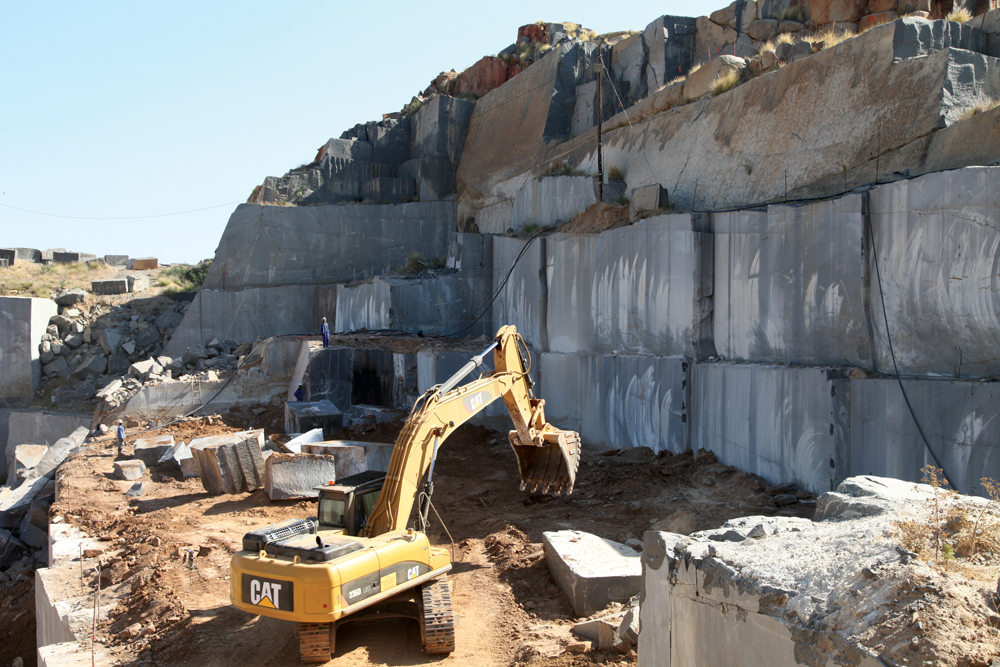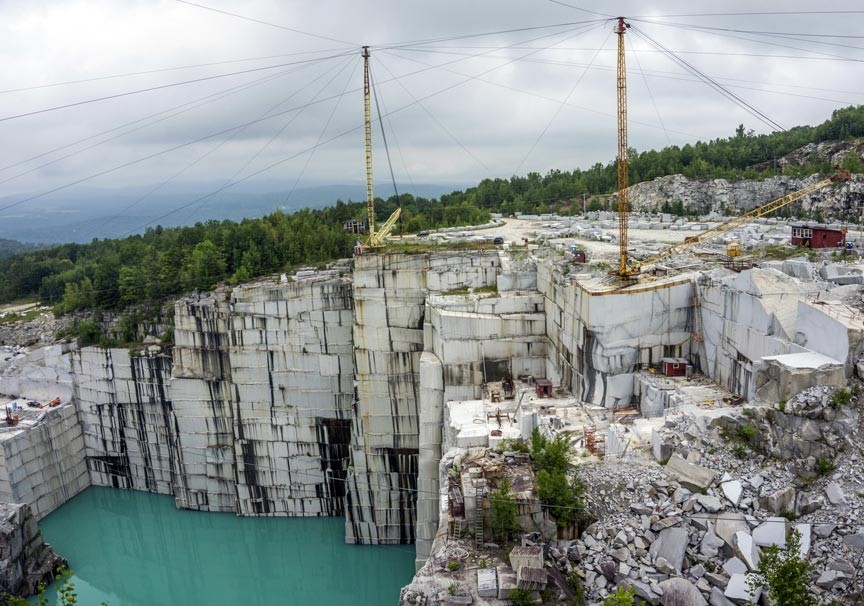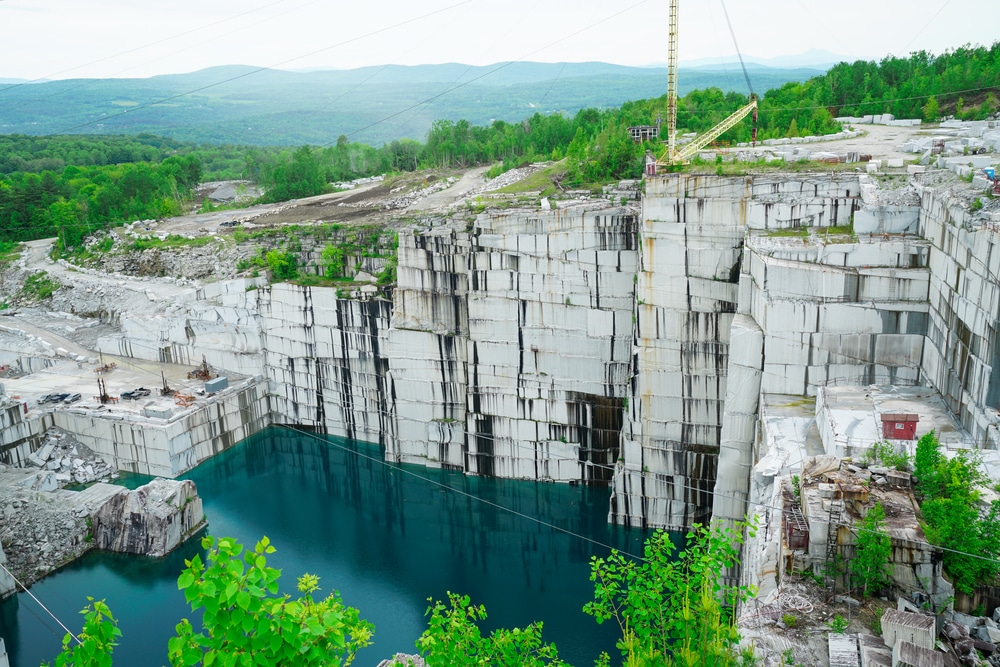Unveiling Granite Quarries in South Africa Heritage: A Trip Through Quarries
Unveiling Granite Quarries in South Africa Heritage: A Trip Through Quarries
Blog Article
Introducing the Mysteries of Granite Quarrying: Where Strength and Sophistication Meet
The globe of granite quarrying is a world where the raw strength of nature converges with human creativity to produce frameworks that stand the examination of time with an air of elegance. From the depths of quarries to the precise sprucing up in workshops, the procedure of changing granite right into building wonders is a complex dance of tradition and development. As we peer into the midsts of this old craft, we start to reveal the surprise details that form the very essence of our built environment.
The Origins of Granite Quarrying
In the annals of architectural background, the beginnings of granite quarrying are shrouded in a tapestry of old workmanship and geological wonders. Going back to old Egypt and Mesopotamia, the removal of granite from quarries marked the beginning of a journey that would eventually result in the creation of some of the world's most iconic frameworks.
Granite quarrying's origins can be mapped to the knowledgeable craftsmens that acknowledged the stone's resilience and aesthetic appeal. Via a mix of primitive devices and sheer determination, these early quarry employees discovered granite blocks that would become the foundation of human beings.
As people developed, so did the techniques of quarrying granite. The Romans, renowned for their engineering expertise, developed sophisticated methods for extracting granite to build monoliths, temples, and roads that stood the examination of time.
The heritage of these ancient quarrying practices continues to form contemporary architecture, with granite continuing to be a sign of strength and elegance in building and construction jobs around the globe. (granite quarries in south africa)
Devices of the Quarrying Trade
The evolution of granite quarrying methods from ancient human beings to contemporary times highlights the vital role played by the devices of the quarrying trade in forming the industry's practices. In old times, quarrying tools were primary, commonly including knives, hammers, and wedges made from materials like bronze or iron. These devices required substantial manpower and time to remove granite blocks from quarries.

In addition, the introduction of pneumatically-driven tools and high-powered equipment has actually significantly reduced the physical labor required in quarrying procedures, boosting employee security and efficiency. As the quarrying market continues to innovate, the tools of the profession continue to be at the leading edge of driving development and shaping the future of granite extraction.
Removing Blocks of Granite
Utilizing accuracy machinery and progressed techniques, the removal of granite blocks from quarries has actually ended up being a sophisticated procedure in the modern quarrying sector. Controlled blowing up techniques are after that employed to damage apart the granite into convenient sections.

Polishing and Ending Up Methods
To achieve a remarkable surface area on granite blocks, experienced craftsmens utilize a series of careful polishing and ending up methods. After the initial removal and shaping procedures, the granite blocks undertake an extensive polishing phase to boost their all-natural beauty and toughness. One typical approach utilized in brightening granite is diamond abrasion, where commercial diamonds are made use of to grind and polish the rock to a smooth finish. This procedure not just produces a glossy surface yet also makes sure uniformity in color and appearance across the granite block.
In addition to polishing, ending Resources up techniques are put on further fine-tune the granite's look. These strategies may include flaming, refining, or cleaning, each offering unique textures and finishes to fit different visual choices. Flaming, as an example, involves exposing the granite surface to high temperatures to produce a rough, distinctive surface, perfect for exterior applications where slip-resistance is essential. Developing, on the other hand, offers a matte surface that is smooth to the touch, best for interior counter tops and floor covering. By meticulously picking and using these brightening and ending up Read Full Report strategies, craftsmens can change raw granite obstructs right into charming items that display both stamina and beauty.

Ecological Impact and Sustainability
With the expanding focus on environmental awareness in the industry, granite quarrying methods are increasingly inspected for their influence on natural deposits and lasting sustainability. Quarrying for granite can have significant ecological implications. The extraction procedure often includes using heavy equipment, nitroglycerins, and large amounts of water, causing environment destruction, dirt disintegration, and water pollution. Furthermore, the transport of granite from quarries to refining facilities produces carbon discharges, further contributing to environmental deterioration. granite quarries in south africa.
To mitigate these impacts and guarantee sustainability in granite quarrying, market stakeholders are embracing numerous actions. Implementing advanced innovations to decrease energy usage and water use, recovering quarried land for environmental repair, and promoting accountable sourcing methods are some techniques being utilized. Moreover, accreditations such as the Woodland Stewardship Council (FSC) and the Management in Energy and Environmental Design (LEED) help consumers try this recognize eco-friendly granite products.
Verdict
In final thought, granite quarrying is a process that calls for specialized tools and strategies to essence blocks of granite and brighten them to a high level of coating. While the ecological impact of quarrying can be considerable, efforts are being made to enhance sustainability practices in the market. In general, granite quarrying is a fragile balance in between harnessing the toughness and beauty of this all-natural stone while lessening its influence on the atmosphere.
Report this page